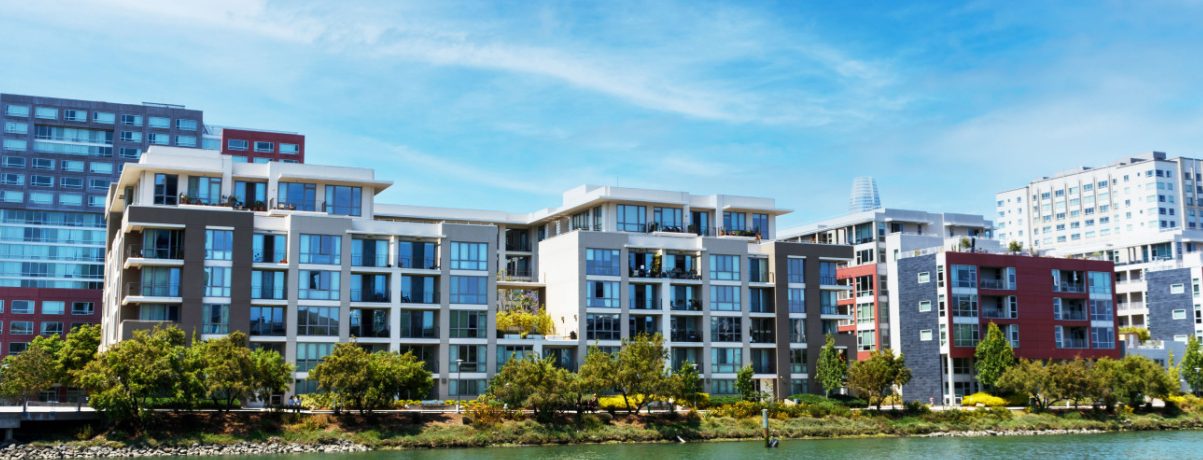Apartment Rental Vacancy Rates
Multifamily investors, landlords and property managers don’t appreciate the hit to profitability when tenants break leases.
Whether its rent prices, lease issues, or wage/job worries, unprepared landlords get hit with losses.
As landlords might say «vacancies happen.» And are you strategizing well enough to prevent losses from all the events that cause high tenant churn and turnover costs? Today, we look at recent vacancy rate trends in the US. Yet the real topic is how to limit the losses from high vacancy rates.
Whether you’re multifamily, single family, short-term vacation, apartment, student housing, or affordable housing management, vacant units can be a significant and insidious loss of revenue and value and rising costs. At the very least, it shows apartments that tenants don’t want.
Big Picture Challenges from High Vacancy Rates:
- higher advertising and leasing costs
- lost rent
- higher turnover and mandatory repair costs
- brand damage from continuous apartment listings
- reflects lower-quality property management
- possible eviction costs
- new maintenance and tenant complaints
As this chart from Statista shows, vacancies are rising quickly, no doubt accelerated due to this year’s new construction glut, which will accelerate in 2024.

Apartment vacancy rate increasing in 2023. Screenshot courtesy of Statista.
The vacancy rates city by city chart below shows vacancy is a significant concern in some cities, especially in those markets which were red hot in recent years.
Trends reverse, and as the economy slowdown deepens, some landlords may not be preparing for higher turnover, lease losses, good renter losses, and less qualified incoming renters. Do you have a well-conceived strategy for finding great renters and keeping them leased for longer terms so the vacancy threat doesn’t harm your business?
Acquire Great Renters | Utilize Longer Term Leases | Keep Renters Leased | Maximize Rental Income
For property pros, vacancy rates can reflect property and management performance, and will affect property values.
As our property management expert says about the matter of occupancy: «1 month of vacancy is 8.3 percent vacancy rate….most deals are underwritten and analysed at far less than this…5% or even 3%…it is easy to fall short of your investment model with a single month of vacancy, let alone 2. «
Apartments and single family homes with low occupancy rates often suffer lower profit, are plagued with issues, have poor management, and sell for less than similar properties with high occupancy rates. High occupancy lifts all revenue, expense, and profit numbers which you’ll be able to see in your property management accounting reports.
On the other hand, tenants wish to see lower rental occupancy rates and higher rental vacancy rates. Occupancy rates are basically the inverse of each other. When vacancy climbs, occupancy rates fall. Occupancy rates vary by city, state and zip code.
US Vacancy Rates in 2023
Their report shows how rental vacancy rates for rentals units has fallen about 4% from the 2008/2009 period. As this chart shows, rental vacancy has fallen roughly from 11% in 2009 to 6.8% today.
The homeowner vacancy rate as it’s dubbed, is now .8% whereas it was about 3% 15 years ago.

Quarterly rental vacancy rates and homeowner vacancy rate. Screenshot courtesy of Census.gov.
The good news for apartment and house renters is that the rental vacancy rate is up from the levels seen during the 3 years of the pandemic. If the economy lags and job rates diminish, we might see further rises in vacancies, turnover, and rent non-payment, as well as eviction costs. and challenges in paying property taxes. However, as the recent US Jobs report revealed, employment levels aren’t falling as economists believed they would and wage demand also has significantly this year. High interest rates will likely erode job outlooks and renters’ cost of living.
Vacancy Rates by Region: USA
As this chart reveals, the fastest rising vacancy rates are in the south and west (slowing migration and weakening affordability, and job losses).

Rental vacancy rates by region. Screenshot courtesy of Census.gov
Regional Vacancy and Occupancy Statistics
The rental vacancy rates outside major metros at (6.9%) and in principal cities (6.7%) are higher than the vacancy rates in the suburbs (5.9 %). Rates within cities was higher year over year, while rates in the suburbs and rural regions was similar to Q1, 2022 rates.
The homeowner vacancy rate in principal cities (0.9%) was higher than the rates outside MSAs (.07%) and in the suburbs (0.7%), which were virtually the same as each other. The rate for areas outside of MSAs was lower year over year, while the rates in principal cities and suburbs stayed at Q1 2022 levels.
The rental vacancy rates were higher in the South (7.8%) and Midwest (6.9 percent) than in the West (5.0%) and Northeast (4.5%).
The homeowner vacancy rate was highest in the South region (1.0%). The Northeast region (0.6%), Midwest (0.6%), and West (0.7%) were not statistically different from each other. The rate in the Midwest was lower than the rate in the first quarter 2022.
Occupancy during Q1, reached 89.65% of housing units in the United States while 10.4% were vacant. Owner-occupied housing units made up 59% of total housing units, while renter-occupied units made up 30% of the inventory in the first quarter 2023.
Asking Rents in the US
Median asking rents have skyrocketed in 2022 and 2023, as the pandemic ended and the economy has restarted. Rents have grown from about$440 a month in 2000 to almost $1500 in 2023. As you can see in this chart below, the pace of acceleration is intense.

Asking rent prices since 2001 in USA. Screenshot courtesy of Census.gov
Rental Vacancy Rates 2023
The rental vacancy rates by city shows some cities have high availability of rental units, while others are suffering from a housing stock issue. Changes in regional and state economies combine with internal migration in the US have made for difficult conditions. High housing costs, and restricted development (NIMBY and anti-housing development regulations) have created a vicious upsurge in home prices and rent prices in some cities.
With the surge in multifamily releases, cost of living rises and lower job growth, this trend will accelerate faster.
| US Rental Vacancy Rate | |
| US Major Metro Area (data courtesy of Census.gov) | Vacancy Rate Q1, 2023 |
| Charleston-North Charleston-Summerville, SC……………………. | 15.3% |
| Baltimore-Columbia-Towson, MD ………………. | 12.8 |
| Houston-The Woodlands-Sugar Land, TX ………………. | 12.3 |
| Birmingham-Hoover, AL……………………………………………………………….. | 11.9 |
| North Port-Bradenton-Sarasota, FL……………………………………………….. | 11.8 |
| Little Rock-North Little Rock-Conway, AR………………………………………. | 11.2 |
| Indianapolis-Carmel-Anderson, IN…………………………………………………. | 10.9 |
| Raleigh, NC24……………………………………………………………………………….. | 10.9 |
| Dallas-Ft. Worth-Arlington, TX……………………………………………………… | 10.8 |
| Minneapolis-St. Paul-Bloomington, MN-WI …………………………………… | 10.1 |
| Nashville-Davidson-Murfreesboro-Franklin, TN…………………………….. | 9.9 |
| Atlanta-Sandy Springs-Roswell, GA……………………………………………. | 9.8 |
| New Orleans-Metairie, LA……………………………………………………………. | 9.6 |
| Albany-Schenectady-Troy, NY ……………………………………………………….. | 9.5 |
| Oklahoma City, OK………………………………………………………………………. | 9.4 |
| Kansas City, MO-KS……………………………………………………………………… | 8.7 |
| Tampa-St. Petersburg-Clearwater, FL……………………………………………. | 8.7 |
| Tulsa, OK…………………………………………………………………………………….. | 8.7 |
| Richmond, VA………………………………………………………………………………. | 8.6 |
| Tucson, AZ …………………………………………………………………………………. | 8.4 |
| Detroit-Warren-Dearborn, MI……………………………………………………. | 8.3 |
| San Antonio-New Braunfels, TX………………………………………………… | 8.2 |
| Cape Coral-Fort Myers, FL…………………………………………………………….. | 8 |
| Jacksonville, FL……………………………………………………………………………. | 7.5 |
| Austin-Round Rock, TX………………………………………………………………… | 7.3 |
| Baton Rouge, LA………………………………………. | 7 |
| Miami-Fort Lauderdale-West Palm Beach, …………………………….. | 7 |
| St. Louis, MO-IL……………………………………………………………………………. | 6.9 |
| Pittsburgh, PA………………………………………………………………………………. | 6.8 |
| Virginia Beach-Norfolk-Newport News, ………………………….. | 6.8 |
| Columbus, OH……………………………………………………………………………… | 6.4 |
| Toledo, OH……………………………………………….. | 6.3 |
| Cincinnati, OH-KY-IN7…………………………………………………………………. | 5.9 |
| San Jose-Sunnyvale-Santa Clara, CA……………………………………………… | 5.9 |
| Portland-Vancouver-Hillsboro, OR-WA …………………………………….. | 5.6 |
| Salt Lake City, UT……………………………………………………………………….. | 5.6 |
| Allentown-Bethlehem-Easton, PA-NJ…………………………………………… | 5.5 |
| Dayton, OH………………………………………………………………………………… | 5.5 |
| Las Vegas-Henderson-Paradise, NV…………………………………………… | 5.5 |
| Washington-Arlington-Alexandria, DC-VA-MD-WV………………………. | 5.5 |
| Memphis, TN-AR-MS………………………………………………………………….. | 5.3 |
| Phoenix-Mesa-Scottsdale, AZ……………………………………………………….. | 5.2 |
| Hartford-West Hartford-East Hartford, CT…………………………………… | 5 |
| Albuquerque, NM………………………………………………………………………. | 4.9 |
| Riverside-San Bernardino-Ontario, CA……………………………………….. | 4.9 |
| Chicago-Naperville-Elgin, IL-IN-W………………………………………….. | 4.7 |
| San Francisco-Oakland-Hayward, CA………………………………………. | 4.7 |
| Knoxville, TN……………………………………………………………………………. | 4.6 |
| Providence-Warwick, RI-MA…………………………………………………… | 4.6 |
| Sacramento-Roseville-Arden-Arcade, CA………………………………… | 4.6 |
| Charlotte-Concord-Gastonia, NC-SC………………………………………… | 4.5 |
| Orlando-Kissimmee-Sanford, FL……………………………………………. | 4.5 |
| Philadelphia-Camden-Wilmington, PA-NJ-DE-MD …………………. | 4.5 |
| Urban Honolulu, HI………………………………………………………………. | 4.5 |
| Greensboro-High Point, NC……………………………………………………….. | 4.4 |
| Denver-Aurora-Lakewood, CO…………………………………………………. | 4.1 |
| New York-Newark-Jersey City, NY-NJ………………………………. | 4.1 |
| Bridgeport-Stamford-Norwalk, CT……………………………………………. | 4 |
| Buffalo-Cheektowaga-Niagara Falls, NY4…………………………………. | 3.8 |
| Grand Rapids-Wyoming, MI…………………………………………………….. | 3.8 |
| Omaha-Council Bluffs, NE-IA………………………………………………….. | 3.8 |
| Milwaukee-Waukesha-West Allis, WI…………………………… | 3.7 |
| Los Angeles-Long Beach-Anaheim, ………………………………….. | 3.5 |
| New Haven-Milford, CT…………………………………………………………… | 3.5 |
| Akron, OH ……………………………………………………………………………. | 3.3 |
| San Diego-Carlsbad, ……………………………………………………… | 3.3 |
| Seattle-Tacoma-Bellevue, WA…………………………………………………… | 3.3 |
| Syracuse, NY…………………………………………. | 3.1 |
| Columbia, SC…………………………………………. | 2.9 |
| Fresno, CA……………………………………………… | 2.9 |
| Boston-Cambridge-Newton, MA-NH3……………………………………… | 2.7 |
| Cleveland-Elyria, OH8……………………………………………………………. | 2.5 |
| Rochester, NY………………………………………………………………………. | 2.5 |
| Worcester, MA………………………………………………………………………. | 1.7 |
| Louisville/Jefferson County, KY-IN…………………………………………….. | 1.2 |
What Drives Occupancy Rates?
It’s a question of supply and demand. The stronger the desirability of an apartment building or multifamily complex, the higher the occupancy rate. However, luxury apartments are seeing lower occupancy rates of recent, so we know price is key factor.
- millennials and employment trends
- housing supply and new construction growth
- immigration
- rent prices
- desirability/location of apartment building
- condition of apartment building
There’s a lot going on today that can alter vacancy rates from rent prices to regional economic trends. It’s important to forecast years ahead because losses from vacancies will lower future cash flow, net operating income, and property rental yields.
Although good property management can lower vacancy rates, it’s the city and neighbourhood occupancy rates that investors key on for better rental property ROI.
How Is Occupancy Rate Calculated?
The vacancy rate is calculated by multiplying the number of vacant units by 100 and then dividing that by the total number of units in the building. A rate below 4% is considered low. Currently the national average vacancy rate is 7% yet this statistic reflects available units in regions and cities that workers are leaving. It’s the vacancy rate in each growing city that draws the attention of real estate investors.
The chart below shows rental rate vary greatly by city. In the Denver Housing market for instance, the occupancy rate last quarter stood at 3.2%. That low rate reflects the big demand in Colorado, yet new multifamily construction has been brisk in the mile high city. Aborption is strong but many are offering concessions.
| Metropolitan Statistical Area | 1st Quarter 2017 | 1st Quarter 2018 | 1st Quarter 2019 |
| (data from census.gov) | Vacancy Rate % | Vacancy Rate % | Vacancy Rate % |
| Akron, OH | 7.9 | 2.3 | 2 |
| Albany-Schenectady-Troy, NY | 9.8 | 9 | 7.9 |
| Albuquerque, NM | 9.7 | 10.7 | 7.1 |
| Allentown-Bethlehem-Easton, PA-NJ | 3 | 7.4 | 7.7 |
| Atlanta-Sandy Springs-Roswell, GA1 | 4.6 | 8.3 | 7.8 |
| Austin-Round Rock, TX | 6.6 | 8.7 | 12.3 |
| Baltimore-Columbia-Towson, MD2 | 9.4 | 6.8 | 7.7 |
| Baton Rouge, LA | 4.3 | 7.5 | 8.2 |
| Birmingham-Hoover, AL | 11.7 | 11.9 | 11.5 |
| Boston-Cambridge-Newton, MA-NH3 | 5.5 | 5.2 | 1.7 |
| Bridgeport-Stamford-Norwalk, CT | 10.4 | 14.5 | 3.5 |
| Buffalo-Cheektowaga-Niagara Falls, NY4 | 7.1 | 10.1 | 5.2 |
| Cape Coral-Fort Myers, FL | 1.8 | 10.7 | 2.4 |
| Charleston-North Charleston-Summerville, SC | 18.8 | 18.8 | 13.6 |
| Charlotte-Concord-Gastonia, NC-SC5 | 3.1 | 4 | 5.5 |
| Chicago-Naperville-Elgin, IL-IN-WI6 | 6.7 | 9 | 5.7 |
| Cincinnati, OH-KY-IN7 | 6.9 | 3.4 | 11.5 |
| Cleveland-Elyria, OH8 | 12.3 | 4.9 | 3.3 |
| Columbia, SC | 6.4 | 7.9 | 10.9 |
| Columbus, OH. | 8.3 | 9.8 | 4.9 |
| Dallas-Ft. Worth-Arlington, TX | 6.4 | 5.8 | 6.7 |
| Dayton, OH | 5.7 | 11.3 | 5.7 |
| Denver-Aurora-Lakewood, CO9 | 4.5 | 4.8 | 3.2 |
| Detroit-Warren-Dearborn, MI10 | 8 | 7.9 | 4.7 |
| Fresno, CA | 5.5 | 1.6 | 9.3 |
| Grand Rapids-Wyoming, MI | 3.9 | 3.9 | 4.9 |
| Greensboro-High Point, NC. . | 15.3 | 10.9 | 9.8 |
| Hartford-West Hartford-East Hartford, CT | 4.8 | 5 | 3.1 |
| Houston-The Woodlands-Sugar Land, TX11 | 11.3 | 8.2 | 10.6 |
| Indianapolis-Carmel-Anderson, IN12 | 9.8 | 9.4 | 5.7 |
| Jacksonville, FL. | 8 | 6.9 | 4.7 |
| Kansas City, MO-KS | 14 | 11.7 | 13.1 |
| Knoxville, TN | 10.7 | 9.8 | 3.6 |
| Las Vegas-Henderson-Paradise, NV13 | 7.8 | 9.6 | 6.4 |
| Little Rock-North Little Rock-Conway, AR | 8.3 | 13.1 | 13.2 |
| Los Angeles-Long Beach-Anaheim, CA14 | 3.6 | 4.2 | 3.6 |
| Louisville/Jefferson County, KY-IN15 | 9.4 | 4 | 11.9 |
| Memphis, TN-AR-MS | 8.9 | 8.7 | 13 |
| Miami-Fort Lauderdale-West Palm Beach, | 6.1 | 6.9 | 7.8 |
| Milwaukee-Waukesha-West Allis, WI | 7.5 | 6 | 7.3 |
| Minneapolis-St. Paul-Bloomington, MN-WI | 4.5 | 3.5 | 5.1 |
| Nashville-Davidson-Murfreesboro-Franklin, | 8.4 | 9.1 | 9.7 |
| New Haven-Milford, CT | 9.9 | 5.5 | 1.8 |
| New Orleans-Metairie, LA.18 | 9.8 | 11.1 | 11.3 |
| New York-Newark-Jersey City, NY-NJ-PA19 | 4.8 | 4 | 4 |
| North Port-Bradenton-Sarasota, FL | 6.8 | 5.3 | 5.2 |
| Oklahoma City, OK | 10.7 | 12.2 | 11.7 |
| Omaha-Council Bluffs, NE-IA | 4 | 4.8 | 6.9 |
| Orlando-Kissimmee-Sanford, FL20 | 6.1 | 6.3 | 6.9 |
| Philadelphia-Camden-Wilmington, PA-NJ | 7.9 | 5.8 | 8.4 |
| Phoenix-Mesa-Scottsdale, AZ | 4.7 | 4.6 | 4 |
| Pittsburgh, PA | 6.8 | 7.8 | 5.3 |
| Portland-Vancouver-Hillsboro, OR-WA22 | 3.9 | 3.6 | 5.6 |
| Providence-Warwick, RI-MA23 | 4.6 | 7.1 | 3.5 |
| Raleigh, NC24 | 4.4 | 6.7 | 6.5 |
| Richmond, VA | 7 | 6.6 | 7.6 |
| Riverside-San Bernardino-Ontario, CA | 6.7 | 4 | 5.5 |
| Rochester, NY | 5.1 | 7.5 | 6.9 |
| Sacramento-Roseville-Arden-Arcade, CA25 | 1.2 | 5.6 | 3.7 |
| St. Louis, MO-IL | 4.9 | 9.6 | 8.1 |
| Salt Lake City, UT | 3.8 | 6.6 | 6.5 |
| San Antonio-New Braunfels, TX26 | 13.4 | 7.6 | 9.3 |
| San Diego-Carlsbad, CA27 | 3.6 | 4.8 | 5.5 |
| San Francisco-Oakland-Hayward | 4.3 | 4.3 | 3.9 |
| San Jose-Sunnyvale-Santa Clara, CA | 5.4 | 6.3 | 2.5 |
| Seattle-Tacoma-Bellevue, WA | 1.9 | 4.6 | 3.9 |
| Syracuse, NY | 13.6 | 2.4 | 17.9 |
| Tampa-St. Petersburg-Clearwater, FL | 10.6 | 9.9 | 11.8 |
| Toledo, OH | 4.6 | 6.7 | 18.1 |
| Tucson, AZ . | 7.9 | 3.9 | 5 |
| Tulsa, OK | 9.9 | 11 | 7 |
| Honolulu | 9.4 | 8.2 | 5.9 |
| Virginia Beach-Norfolk-Newport News, VA | 8.6 | 5.2 | 8.5 |
| Washington-Arlington-Alexandria, DC-VA | 6 | 7.7 | 5.9 |
| Worcester, MA | 4.1 | 4.4 | 4.5 |
Multifamily Occupancy Rates
As this graphic from Statista® shows, Multifamily vacancy rates have fallen precipitously which means multifamily occupancy rates are up. That rate rise combined with higher rents, and low rental house availability has spawned a great deal of interest of recent in the multifamily housing market.
Rental occupancy rates are an important statistical trend for landlords and property investors to include in their property analysis. Low occupancy rates signify a less profi table rental property whether a house or apartment. Higher vacancy rates normally occur due the unattractiveness neighborhood, poor amenities in the rental unit, or migration trends away from that city or state, or simply a high price.
Low occupancy rates suggest higher churn and tenant acquisition costs, unit turnover costs, weaker cash flow, tenant problems, evictions, and reduced profit since mortgage payments, property taxes, insurance, and maintenance costs continue even when there is no rental income.
Find out more about how ManageCasa can help you manage more professionally to raise your occupancy rate and lower your tenant churn.
Property Management Insight: Property Management Software Reviews | Vegas Rental Market | Cities with Highest Property Taxes | Florida Rental Properties | Best Florida Cities to Buy Property | Best Cities to Buy Property in California | Best Type of Property to Buy | Property Management Accounting Software | Accounting Automation | Apartment Management Software Solution | Multifamily Property Investment






